#DC’S Essential Graphic Novels
Explore tagged Tumblr posts
Text
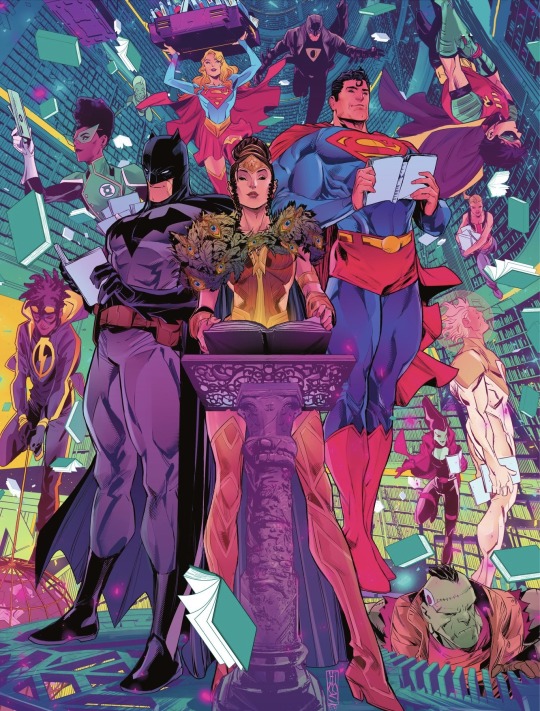
John Timms’ cover art to DC’s Essential Graphic Novels (2023)
#DC’S Essential Graphic Novels#dc comics#wonder woman#historia#diana of themiscyra#superman#clark kent#batman#bruce wayne#static#virgil hawkins#apollo#green lantern#jo mullein#robin#tim drake#supergirl#kara zor el#midnighter#jenny sparks#the authority
623 notes
·
View notes
Note
What runs/stories do you recommend for someone starting WW? Could you please be specific (/nicely)
Yeah ofc!
My Wonder Woman Starter Recs (specific style 😎)
First stops: for an initial introduction to Wonder Woman, I'd generally recommend going to at least one of three places first. These three are:
Wonder Woman: Historia: The Amazons by Kelly Sue DeConnick
Wonder Woman: Year One by Greg Rucka
Wonder Woman: the Hiketeia by Greg Rucka
Of these I generally recommend reading Historia first, as it's a retelling of the origin of the Amazons as a race and how Diana came to be (so it essentially starts from the beginning) and is also the most recent of the them (if that means anything). Something to note about Historia though is that it's a DC Black Label book, so it's events aren't strictly canon in the main DCU and there are some changes and new elements present. I don't think this is something that should discourage anyone from reading it though, it's the best WW origin story out there, and even in strict main canon over the years her origin is one that has had many fluctuations and small (& sometimes big) changes. WW:Historia is three prestige format (longer) issues.
You'll notice the third book there is WW: The Hiketeia. Hiketeia is a great book if you're looking for a view into Diana as a professional and experienced hero. It's a graphic novel so standalone and not too long, and has a great Diana and really interesting plot (Diana vows to protect a young woman and finds herself pressed against the wheels of Greek Tragedy). This is also the first work with Diana done by Greg Rucka, one of her most prolific and loved writers. A sampling of this work (and also Historia) I think gives a good guide to where to go next in terms of runs on her main title.
Wonder Woman: Year One is the second book on the list up there, but I'm mentioning it last here as it's a bit more complicated in terms of format. Unlike other year one books, WW: Year One is actually a series of issues on her main title, showcasing Diana's arrival to man's world in Rebirth (and also current p sure) continuity. The issue numbering for this one is strange (only the even issues 2-14 on WW (2016)) so I recommend looking for this in trade form if possible.
These 3 books I think give a taste of some of the best standalone stuff in the Wonder Woman mythos, and give the reader a good idea of where they may want to go next in terms of longer runs on the title. So I'll break that down here as a Step 2.
STEP 2: WHERE NEXT?
Here I break down some highly recommended runs based on what they have in common with the standalone books from step 1. As a rule, these runs are going to be much longer than the above and generally more connected to the wider DCU and other books. Look for the italics to see the introduction to each new work. Explanation paragraphs follow after each italic/bold rec.
Curious about Greek mythology in WW and the Amazons' origins after reading Historia? Liked the prescence of a supporting cast and Diana learning about Man's World from Year One? Willing to read a longer run? I recommend: Wonder Woman by George Pérez
George Pérez's time on Wonder Woman totally reinvented the character after Crisis on Infinite Earths, and is fundamental in establishing many core concepts of her lore. At 62 issues, 2 annuals, and a 4-issue crossover event at the end (War of the Gods), it's definitely a commitment to read, but it's the most enduring and well-loved run on Wonder Woman for a reason--it's just that damn good. Lots of focus on mythology (although with a lighter tone than Historia) alongside Diana learning her role in relation to Man's World & establishing herself as a hero and ambassador. Pérez's run also has almost-certainly the most expansive and developed supporting cast in WW comics, something that really drives the emotional core of the series, especially in later issues. Obligatory note that this series was written between 1987 and 1992 and contains some very occasional aspects that I thought were in some way dated/uncomfortable etc. while reading (details of Cheetah's origin, depiction of the Bana-Mighdall, Hercules) but despite that I still highly, highly recommend this run. The word fundamental cannot begin to describe it.
Liked the experienced Diana of the Hiketeia? Interested to see her attempt to balance the high stakes responsibilities of an ambassador and superhero? Looking for some really badass moments and fights? Haven't read enough terrible tragedy? I suggest: Wonder Woman by Greg Rucka 2003 EDITION.
Some of Diana's coolest moments of all time are collected here. Also one of her most controversial. The 1st Rucka run is very much the story for anyone who liked the Diana of the Hiketeia and the tragedy of that and Historia. 2003 Rucka Diana is a Diana tested, forced to make decisions that are anything but easy, and live with the consequences. She's extraordinarily capable, but her enemies know that and are prepared to that end. This run, along with the Pérez run, rank among my favorite Wondy comics of all time (those and Historia are my top 3). This run is such peak Diana, especially in terms of sheer badassery. Her final confrontation with Medusa is in my opinion perhaps the greatest Wonder Woman fight scene of all time. Her encounter with Athena in the second-to-last issue breaks me every time. Cannot recommend this book more.
*a note abt this run is that it is more context-dependent than the other ones listed here, as it's the run that finishes out the Wonder Woman vol. 2 book and so has some guest appearances from characters introduced in other prior runs (Artemis of Bana-Mighdall, Cassie Sandsmark, and Vanessa Kapatelis, to name a few). I read this run before knowing much (if anything) about any of them, and still enjoyed it a lot, so I wouldn't be worried about this really but just thought I'd mention it.
Rucka's 2003 run is published from Wonder Woman (1987) #195-226. You can also find it in trade and I believe(?) omnibus. Sometimes the Hiketeia is included in collections of this series, as the 03 run is thematically similar in many places, just with a much deeper look at Diana and the world & with higher stakes.
Liked the specific characters and plot threads of Wonder Woman: Year One? Want to see what happens with Diana's exile, or learn more about Barbara Ann? Want a Diana in between the extremes of young and highly experienced? Wonder Woman by Greg Rucka 2016 EDITION may be for you.
...yes I'm putting ANOTHER Rucka book on here. He writes a great Diana, what can I say. This run is the same one that Year One came out of, just the follow ups to that story and versions of the characters. I have this run listed as separate from Year One though, as there's some really big time skips since the events of that first volume. A lot of time has passed since then, and there's more history between the characters, not all of it without drama. This run continues to be weird with the numbering, as well as some artist changes, so I definitely recommend looking into reading this in trade format (physical or digital) if at all possible. My recommended reading order is WW 2016 by Rucka vol. 2 "The Lies" (Wonder Woman: Rebirth Special #1, followed by 2016 main title odd numbered issues 1-11), then Rucka 16 vol. 3 "The Truth" (odds 13-23) then Godwatch (evens 16 through 24) followed by 25? But The Truth and Godwatch combine near the end so that doesn't really work either. This run is so good but recommending it is such a pain because the numbering is so all over the place. On God I never know which order to read this in. Going to revoke my previous statement and say read it as Rebirth Special 1, then only odds 1 through 11, then from 13 through 25 normally. That may lead to some weirdness as you read because the two stories take place at different times and have different art styles, but they come together at the end pretty dramatically so I think it's less confusing to read it this way? Maybe? So strange bc this is one of the go to good starter runs and yet it's set up so unintuitively. If someone has a better way to read this then let me know and ill edit, ik this explanation is super confusing bc neither way to read it is totally ideal imo and I feel I definitely read it in a weird order.
Going to call that a good rundown of some of my greatest recommendations in terms of Wonder Woman comics. If anything wasn't fully clear here or anyone (not just anon) has questions or wants to talk abt WW comics/my choices feel free to send as many asks or dms as you want. Have a good day everybody, & as Diana says, may the glory of Gaea be with you <3
#slept on this post for longer than i wanted to but yeah 👍#ive got to go to bed now but this is how id do it#start w the great minis/short ones and then follow your favorite themes into the amazing longer runs#also ik there are some stuff ive seen recommended a lot that arent here. (namely the simone run and legend of ww by liz denae(?) but thats#bc i havent read them yet. also even if so idk if id send them rhere first when this exists#theres sooooooo much rucka on here to be so honest but i dont apologize. there for a reason#also didnt mention the other 2 runs i see starter recommended all the time which is nu52 and tom king bc uh no <3. we dont do that here.#yeah theyre easy to jump on bc they both start with 1 but theyre not a good representation of diana the amazons or why people like diana. or#in tk's case theyre just kind of mid/bad and weird.#idk. not worth mentioning so i didnt#anon if this isnt specific enough for you feel free to follow up. especially about the rucka 2016 because that one is weird with the reading#order and i think i only made it more confusing w my explanation there#diana of themyscira#reading guides#answered
90 notes
·
View notes
Text
So you want to know more about Big Barda
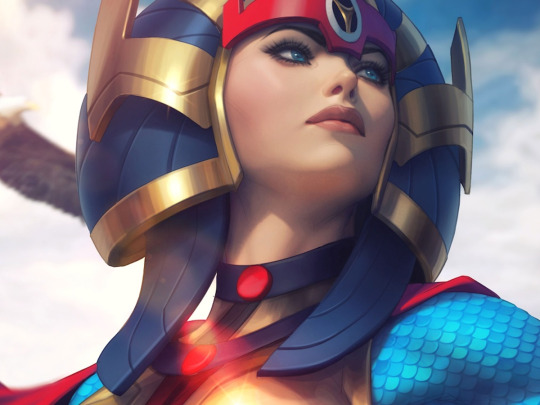
As Tumblr's resident expert on all things Barda, and as Kelly Thompson's Birds of Prey run brings far more attention to the character, I figured it was high time someone stepped in and gave the tumblr world a primer on DC's biggest and boldest heroine.
The Basics:
Introduced in Mister Miracle #4 by Jack Kirby, Big Barda was once the leader of Apokolips' premier death squad, the Female Furies. Trained from birth for a life of violence by Granny Goodness, Barda spent the first 250 years of her life as a living weapon. This all changed when she met Scott Free, a gentle Parademon-in-training with a mysterious past and a knack for escapes. Eventually, she and Scott both escaped to Earth, where they fell in love with both the Earth and each other. She's a lover, she's a fighter, she's a Pokémon card expert, but most of all, SHE BIG.
Barda's signature defining attribute is her raw strength. Her raw muscle allows her to keep up with heavy hitters like Wonder Woman. This isn't to suggest that she's a simple-minded brute, however-- Barda has centuries of military experience under her belt as leader of the Female Furies. She's mastered multiple weapons, including spears, swords, and her signature Mega-Rod.
Below are some reading recommendations for anyone interested in Big Barda:
Essential Runs:
Mister Miracle Vol. 1 #4-18 by Jack Kirby (1971-1974)
This was the run that introduced the world to Big Barda, as well as the Female Furies. If you want to know the basics of Barda, there's no better place to start. This run is collected in a trade, as well as a part in The Fourth World Omnibus Vol. 1.
(NOTE: Even though Barda doesn't appear until issue #4, I suggest you start with Issue #1. It'll help you get acquainted with the rest of the mythos.)
Justice League International #14-24 by Keith Giffen and J.M. DeMatteis (1988-1989)
Big Barda was on the JLI! She plays off the other characters as well as ever, and a lot of what's great about her in Jack Kirby's original run is still here! Definitely check this one out if you want to see her in another team setting. This has been collected in this omnibus.
(NOTE: Once again, I recommend you start from issue #1.)
Popular Runs:
Mister Miracle Vol. 4 #1-12 by Tom King and Mitch Gerads (2017-2018)
Yeah, I know.
Listen, Tom King is a writer with... idiosyncrasies to put it nicely. The characters in the periphery of his stories tend to act really out of character, and his dialogue can be clunky at times. That being said, The Scott/Barda dynamic in this book is excellent, and this book has some of the best art that the Fourth World has seen since the 80s. The series has been collected in a trade.
(NOTE: Did you know that the CIA has over 2003 files on Tom King? Look up "Tom King CIA 2003" for more info!)
Mister Miracle: The Great Escape by Varian Johnson and Daniel Isles (2022)
If you're at all interested in the idea of a Young Adult reimagining of Mister Miracle and Big Barda's origin story with an all-black cast, this book was made for you. It's a bit heavy on the YA tropes, but the Scott/Barda dynamic is really solid. It was released as a standalone graphic novel.
Birds of Prey Vol. 5 #1-??? by Kelly Thompson and Leonardo Romero (2023-)
Admit it, this is the reason you're here. The Cassandra Cain & Big Barda is so instantly iconic, I'm surprised no writer has paired them up sooner. It also helps that this book has the single best Barda look since Jack Kirby's original run. Plus, she gets to throw down with Wonder Woman! What's not to love? This run is still ongoing, but the first 6 issues should be getting a trade pretty soon.
(NOTE: I started writing this before BOP #8 dropped, I had no idea about that thing that happens in the newest issue.)
Stories to Avoid:
Action Comics #592-593 by John Byrne (1987)
This is not a comic book-- it's an infohazard designed to cause pain and suffering to anyone who knows of its existence. Its premise is vile and disrespectful on the surface, and it becomes more insidious when you learn the context of its creation. This pair of issues is profoundly evil, rivaling even Avengers #200 in terms of loathsomeness.
For those who dare to investigate this, Content Warnings for rape, mind control, and human trafficking.
Anyway, let's end on something a bit lighter, shall we?
Remember that Mister Miracle YA graphic novel I mentioned earlier? Barda is getting a graphic novel of her own this summer! It's not out at the time of writing, but the preview pages look promising!
Anyway, I hope you enjoyed that introduction to one of my favorite superheroes ever. Please get back to me on this, I have no one else to talk to about Fourth World stuff.
#big barda#barda free#dc comics#mister miracle#scott free#fourth world#new gods#justice league international#jli#birds of prey#jack kirby#keith giffen#j. m. dematteis#varian johnson#daniel isles#kelly thompson#leonardo romero#small bat#black bat#cassandra cain#wonder woman#diana prince#diana of themyscira
84 notes
·
View notes
Text

My local comic book shop let me have this let’s see what 2013 DC considered essential graphic novels
39 notes
·
View notes
Text
DC Power 2024: Finally sat down to read this because I’d been holding off on it due to the Far Sector epilogue.
I’m going to look at writers again too, as a casual comparison to the seasonal anthologies. My first impression is that there was more variation in story length than some of the other anthologies: on top of a 13 page epilogue, the anthology had a mix 8 page and 10 page stories, while it’s been standardising to 10 page pitches for the seasonals.
Enduring Farewells (N.K. Jemisin): In terms of the story, this was a lovely little cap on the run. Loved the surprise party, the baking discussion, and Jo and John getting to bond a bit.
Looks like they’re popping it into the deluxe trade, which makes sense – might as well keep all the parts together. (This is a thing I’m seeing DC collections do more often when a story is spread through various places, and they should be applauded for it and encouraged to continue: the Tim Drake: Robin trades have the entire Meghan Fitzwilliam storyline)
N.K. Jemisin is a multi-Hugo, Nebula and Locus winning novelist who was specifically recruited to do Far Sector. I think her translation between formats has been pretty solid.
The Spice of Life (Cheryl Lynn Eaton): this is part of Pierce family arc that’s been going on for a bit leading into the current Black Lightning run, where Anissa’s having issues with her powers. I haven’t actually clean read the storyline through, but it’s been ticking along in various anthologies since 2021 or so? Look, this is definitely one of those stories where I felt like a complete cultural outsider lacking a chunk of context, and the story is too slight to pick it up. Which is fine, this anthology is absolutely not aimed at me; I just wonder if the cohort for who it is aimed at find it compelling or heavy handed.
Cheryl Lynn Eaton has been getting more Marvel work than DC, but is largely getting published in Voices/Power stuff. She did get a Black Panther event tie-in mini last year that seems to have got solid reviews.
Pit Stop (Lamar Giles): I honestly can’t believe that we’re getting Bloodwynd stories in the 21st century, let alone LEGACY BLOODWYND stories, but then I’ve never actually got my head around and read the entire situation back in the 90s Justice League. My understanding of what was going on was limited to approximately “this is something involving Martian Manhunter identities, and I know it’s complicated”. I’m happy for all the Bloodwynd fans out there that they got new material.
Lamar Giles’ one other comics work is the Static teen graphic novel for DC. As is common for people on that pathway, he has a substantial bibliography of YA novels over the last decade.
Pure Blackness (John Ridley): Ridley’s annual contribution to this title was an Earth-2 Val-Zod story. It was a very ‘let’s tell the origin story’ tale. It felt very much exactly like how he likes to tell a story. I don’t have a lot to say about it, really? Feels a bit like a swipe at Absolute Superman, except it was written probably before the pitches for that were even delivered.
Ridley of course has extensive comics credits with DC and multiple ongoings, among his other achievements.
Lost at Sea (Deron Bennett): okay this was a fun piece of horror. I am meaning to get to more Aqua stuff, and I don’t fully understand the emotions between Black Manta and Jackson, but I will say, given Black Manta’s most famous moments, him being essentially framed for killing kids clearly has some schadenfreude to it, particularly when he got OUTRAGED that someone would to that to him. I WONDER WHY PEOPLE MIGHT TRY THAT, BLACK MANTA. I am completely unaware of how accepting Manta is towards Jackson’s sexuality but this was positing that he’s supportive? Ish? Hmmmm.
Deron Bennett is a DC letterer (he’s done a lot of work for the Bat office since Rebirth, particularly on Batman, Batwoman, Green Arrow and Batgirl) and this is his first work as a writer. I think it was a very respectable opening story. He got to team up with Denys Cowan, which certainly helped make the story look good.
The Session (Shawn Martinbrough): I was all set to add this to my collection of ‘DC psychologists you should be using in stories as superhero psychs’ except it rapidly entered the ‘DC psychologists are the enemy, again’ zone. That aside, love every time people have Crispus Allen and Renee Montoya in stories together. Obviously this sent in the past, probably pre-Flashpoint, as this is incredibly Allen’s first appearance since 2011. Which. WHAT?
Shawn Martinbrough has a three decade career in comics, however the majority of his work has been over in the art side. His other DC writing credits are on Red Hood and Red Hood: The Hill.
The Natural Order (Alitha Martinez): This was a cute Nubia story! Pity about Mxy being in it but I’m just generally not a fan of 5th dimension imps at any time.
This is Alitha’s first story as a writer with DC, however she’s worked as a penciller and inker on a number of projects, most notably on the earlier Nubia minis, so she’s certainly across the character.
Jump Shots & Loose Watts (Jarrett Williams):this was a promotional story for Speed Force, essentially. As such, it had the exact same sort of tone as Speed Force, and on top of that had the perky sort of ‘you, marginalised kid I am trying to relate to, you’re the REAL hero not superheroes!’ tone that feels somewhat off base in this anthology, as given the price point I suspect it’s unlikely to end up in the hands of many marginalised Black teens and kids.
Jarrett Williams, on top of writing Speed Force, has an substantial set of credits writing cartoon tie-in comics (there’s a lot of Rick and Morty in particular). The similar tone is noticeable.
Fair Play (Greg Burnham): it was nice to see a title actually starring Michael Holt for a change, as he’s been very relegated to a ‘call in tech support’ character for a while now.
Greg Burnham has a couple of other anthology credits with DC (one Halloween, one with Milestone Initiative), and a handful of indie comics titles.
The Light That Shines (Brandon Thomas): Duke goes hopping in time and talks to his older self to get a perk up. It’s apparently related to an earlier story Thomas wrote in Batman Black & White.
Brandon Thomas, along with Bryan Hill, are DC’s two major Duke writers since Scott Snyder stepped back from writing mainline stories. His work for DC also includes a lot of Jackson Hyde’s stories and the current Black Lightning run.
On balance, looking at this list of ten writers, I would say there are legitimately two who qualify for the tagline of “all star cast” (Jemisin and Ridley), plus Thomas having substantial writing credits with DC and Williams having a current mini when this came out. I’m delighted to see that they gave writing opportunities to three of their long term artists (Bennett, Martinbrough and Martinez). A lot of this list looks more like ‘offered opportunities’ rather than open to brand new pitches. I’d say the experience level is on average slightly higher than comparable seasonal anthologies.
-
DC Power: Rise of the Power Company (2025): I think it’s worth noting that this is a substantially shorter anthology this year compared to 2023 or 2024. 2023 had 56 pages of story and 2024 had 95 pages. 2025’s entry only manages 40 pages, however the one particularly notable thing about those 40 is that 3 of the 4 stories feel prepped or related to current or solicited storylines. As such, it feels less like an annual celebration anthology and more like an event anthology.
The writing team is Brandon Thomas, Zipporah Smith, John Jennings and Vita Ayala. It’s Jennings’ first DC story, but Smith has been turning her hand to a diverse range of characters in shorts, and Thomas and Ayala have substantial credits.
Company Man (Brandon Thomas): This is just set up for future Black Lightning and Power Company storylines, surely? If you’re reading either of those, you should probably be dipping into this to check on the framing happening. It would probably be a better story if it wasn’t clearly doing a lot of heavy lifting to move pawns into place.
Ring of Power (Zipporah Smith): Mari gets to team up with EVERYONE, it feels like. Can’t escape being a supporting character, but wow do people like using her to showcase others. This is a nice check in on what’s happening with Malik White.
Unfinished Business (John Jennings): Jo Mullein and Vic doing stuff with the new Justice League satellite. Like all of the current Justice League-entangled stories, I’m sort of waiting to find out if we do have an overarching plot here or if it’s just setting vibes that everyone is being asked to use. It’s cute but fairly insubstantial.
Dynamic Duo (Vita Ayala): look, I’ll be honest; I haven’t been particularly impressed with Ayala’s voices and characterisation when writing various Bat characters. I don’t mind the Duke voice here too much (though it’s quite perky for Duke), but it felt Wow Are We Black Bat Characters, Have You Noticed We Are Both Black? Which, firstly, please have someone finally let Duke and Luke actually meet on page, both of them clearly want to get to know the other. Also it felt like a lot of heavy handed commentary on how partitioned off Ridley’s been keeping Jace Fox.
7 notes
·
View notes
Text


art by John Timms DC’s Essential Graphic Novels (2023)
#wonder woman#batman#superman#dc comics#superwonderbat#john timms#cover art#comic book art#dc#supergirl#static#apollo#robin#comics
109 notes
·
View notes
Text
The Court of Owls Fanhome Edition... there's better options to read this story
The Court of Owls Fanhome Edition... there's better options to read this story #comics #comicbooks #batman
Fanhome has launched The Legends of Batman, an expansive series of hardcover graphic novels featuring the greatest adventures of DC’s legendary Caped Crusader. This incredible series of stories brings Batman’s life story together in an epic full-color collection. The Legends of Batman Collection includes the best and most essential Batman adventures by legendary creative teams. The collection…
#batman#dc comics#fco plascencia#featured#graphic novel#graphic novels#greg capullo#jimmy betancourt#jonathan glapion#richard starkings#scott snyder#video
3 notes
·
View notes
Text
I literally cannot even with the RWBY JL thing. Like, first off, I'm not a DC girly, so this whole movie isn't for me because I do not care about Superman and Batman and any of them. I haven't seen either movie because I've never really been drawn to the DC characters even in their original content, let alone with writers I already think aren't good.
But second off, I think it's just one of the worst ideas that the RWBY writers/creators have had that wasn't bigotry related. Like, it's right up there with them making Penny human and then having Jaune kill her, and dropping their mains into another dimension for a season, in terms of just godawful ideas imo and it might even be an even WORSE idea.
Number one, this should at most have stayed a comic book or graphic novel thing, they shouldn't be using any money, time, or resources to make it full movies.
Number two, it feels like a desperate bid to both get new fans and to keep their own, like "WAIT WAIT NO, STAY, CURRENT FANS! I KNOW THIS LAST VOLUME WAS OUR WORST YET AND WE HAVEN'T GREENLIT VOLUME 10 YET, BUT LOOOOK BEES KISS PART II!!!!" And "HEY YOU, HEY DC FAN, DON'T YOU LIKE BATMAN? LOOK WHO HE'S WITH, IT'S SOME GIRL, DON'T YOU WANT TO KNOW HER STORY?" Like the desperation that I get just from the vibes. XD
Number three, the RWBY world despite being filled with people with what's essentially super powers is really different it feels like than your basic superhero world? So it feels like... If the people in Star Wars were suddenly in Star Trek. Yeah, they're both space stories about spaceships and space weapons, but they're wholly different and they feel like they don't belong together.
Number four, I don't even know the DC characters, but I feel like even badly written, them outshining the mains is a real and major concern. These are some of the most popular characters point blank period, and then there's just like, not even just the RWBY characters now but like 'adult' versions of them in some terrible outfits lol, and it's just like... Who thought this was a good idea? XD
Like who thought this
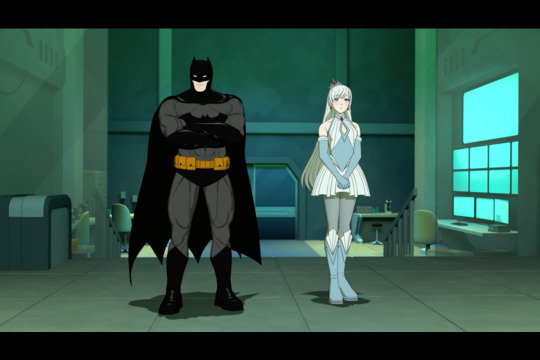
Was a good idea?
Also the outfit designs for Team RWBY in the part II of this are like 96% horrible ugly bad. Like I've been dying for the mains to get new outfits because the V7-9 looks are so bad, but this is just making me feel hopeless. I feel like we might have already said goodbye to the good outfits permanently.
23 notes
·
View notes
Text
2024 SDCC – Bear McCreary Panel
Greetings all!
I continue my experience at 2024 SDCC with the Bear McCreary panel titled, “Musical World building!”
Before the panel came to the podium, heavy metal music filled the packed auditorium! 👂 Turns out, this music was from “The Singularity.” You can hear more of this composition by following this link: https://bearmccreary.com/thesingularity/
After the muscial intro, the panelists then came out individually and introduced themselves:
First to the stage was Bear McCreary! 👏🏻👏🏻👏🏻
We Outlander fans honor Bear who has brought us, over the seasons, the most wonderful renditions of the Sky Boat Song! And, of course, we fans are keenly aware of his numerous musical accomplishments beyond Outlander!

Next was Kyle Higgins who was unknown to me but, given the applause, was recognized by many audience members. He is best known for his work on the Batman franchise at DC Comics, namely writing the miniseries Batman: Gates of Gotham and for the Nightwing and Batman Beyond titles, the Mighty Morphin Power Rangers franchise at Boom! Studios, and Radiant Black at Image Comics.
Matias Bergara was next. He lives in Uruguay and is a video game designer, comic book writer and artist. After winning numerous awards in South America, he works almost exclusively for the international market, and illustrated a children‘s book by Neil Gaiman, “Odd and the Frost Giants.”

Last, but certainly not least, was Raya Yarbrough! Raya is Bear’s spouse who was beautiful and poised as always. Raya, is an eclectic poet, singer and songwriter based in Los Angeles. Although she is most recognized as the singer of the theme for Outlander, her voice and original music have been featured in many TV series, including Battlestar Galactica, Marvel’s Agents Of Shield, Da Vinci’s Demons, and Agent Carter. Her album “Raya Yarbrough,” was released internationally on Telarc/Concord records.
We were not allowed to video record this session, but I did make an audio recording. I hope you enjoy hearing the session in its entirety. Here it is!Audio Player
00:00
00:00
Use Up/Down Arrow keys to increase or decrease volume.
The following are highlights from the discussion in case you missed them.
*Bear talked about working on The Singularity, a graphic musical novel that required collaboration between numerous heavy metal groups and artists of word and graphics including Kyle, Matias and Raya. His goal was to develop one cohesive vision and bring it to life by collaboration. This is the backbone of musical world-building.
In other news, Bear is working on a broadway show titled “Particle Fever!” It is based on the Higgs boson, aka the God Particle, discovered at the CERN large particle accelerator in Switzerland. He claims molecular physic’s time has come! 🤓
Bear said his musical score for Battlestar Galactic is tattooed on his heart because he got his start there at age, 24! However, his favorite score is from Godzilla: King of Monsters!
He revealed that he decided to score an original piece for the ending credits of Godzilla. When the film was first reviewed by the bigwigs, they started to leave as the credits rolled, but Bear asked them to wait. After the credits were done, they exclaimed they hadn’t authorized money for a final piece but he explained he knew that, he just wanted to do it! Presumably, for free! 🤩
*Kyle was asked what he would tell his young self. His answer: “just finish things!” 🤗 He also said clarity is very important. And, conflict with its tension and release plays an essential role in his creative efforts.
*Matias made a comic book out of music. He advised the audience to do things honestly and directly. 😇
*Raya is a poet, song writer and singer and is now a mother of two! She told us her mother wrote “Night Terrors” for Star Trek: the Next Generation. something I did not know! As a busy mom, she has to find time during the day to compose. She says while writing lyrics, she may not know what she is trying to say until she gets to the last line! 😮
Her latest project is a collaboration with Bear based on 82 ancient wheels and cogs found in the sea near Athens. These remnants comprise the oldest known analogue computer, an orrery (model of the solar system), known as the Antikythera mechanism (image below). Raya sings the voice of the machine as they explore its psychology! 🤔

There is much more to hear in the recording so I will close with gratitude for the gifts that Raya and Bear have given to the Outlander community. Looking forward to the second half of season 7! 🤗
The deeply grateful,
Outlander Anatomist
Follow me on:
Twitter: @OutLandAnatomy
Facebook: OutlandishAnatomyLessons
Instagram: @outlanderanatomy
Tumblr: @outlanderanatomy
Youtube: Outlander Anatomy
Photo and video credits: www.wikipedia.com, Outlander Anatomy, Bear McCreary
6 notes
·
View notes
Text

Luke Arnold, Doc Wyatt talk the teamwork and insanity that defines ‘ESSENTIALS’
The compelling new OGN is funding via Kickstarter.
by Chris Coplan (April 18, 2024)
You may know Luke Arnold as Long John Silver in the Black Sails and/or INXS’ own Michael Hutchence in the Never Tear Us Apart miniseries. Doc Wyatt, meanwhile, is best known for his production work on the iconic Napoleon Dynamite and the animated Rocket and Groot for Marvel. So, what happens when a lauded actor and a TV writer/producer get together? Why a brand-new graphic novel, ESSENTIALS.
For ESSENTIALS, Arnold and Wyatt were brought together in part by The Lab Press, a new publishing outfit that focuses primarily on graphic novels. Together, the pair then collaborated with a veritable smorgasbord of comics artists, including Bill Sienkiewicz (who does the cover), Dani, Jason Howard, Andrea Mutti, and Glenn Fabry. (The book’s colors were provided by Jordie Bellaire, Brad Simpson, and Wesley Wong, with lettering from DC Hopkins of AndWorld Design).
Once fully assembled, this superstar team behind ESSENTIALS set about crafting a story in which “the world you see around you is not real.” More specifically, we follow “disgraced mathematician Harris Pax” as he and Buttons (an “interdimensional being possessing his niece’s favorite toy”) set about smashing the walls of this faux reality. ESSENTIALS asks some big questions — “What matters most in a well-lived life? Is joy more valuable than truth?” — just as much as it’s a rollicking, dimension-hopping adventure story.
ESSENTIALS is currently crowdfunding via Kickstarter, with the campaign having raised $13,000-plus (of a seemingly $1,111 goal) on the way to its May 16 deadline. (Head here to contribute.) To get a better idea of the work that went into ESSENTIALS, we recently got to field questions to both Arnold and Wyatt. The duo spoke about the somewhat involved creative process, the big themes at the book’s heart, working with The Lab Press, and much more.

The talent behind ESSENTIALS. Courtesy of The Lab Press.
AIPT: I’m curious: what’s the collaborative process look like between a TV writer and an actor making a comic book?
Luke Arnold: It’s hard to summarize this process because there are so many stages. We broke most of the story on zoom between Australia and LA. Then, we outlined in pieces, trading them back and forth multiple times, rewriting and recrafting until we were happy. After that, we’d take a chapter each, write them, share them, editing and/or rewriting each other’s work. Then, it would go to the artists, and we’d wait for the first sketches to roll in.
Because the team (Doc, myself, and everyone at The Lab) is spread around the globe, we found that the best place to review artwork was actually in VR. We all got Oculus headsets that allowed us to sit around a table together with the art displayed on a huge board in front of us, marveling over the work and deciding on any notes to send back to the artists.
The next few stages would take place over email, and then when all the art was finished, Doc and I would get back on Zoom to take another look at the script. Once you have those final pages, you can quickly realize that a lot of dialogue feels unnecessary, so we’d go through and make changes before sending everything to the letterer. That was one of my favorite stages, as you have an opportunity to write some parts all over again, inspired by the work of the artists.
Doc Wyatt: Luke’s an actor, but he’s also a novelist. His novels blow me away. I knew Luke first as an actor, and on set, he was talking about these fantasy novels that he wanted to write. But when it actually happened, I was blown away. The Last Smile in Sunder City was Luke’s first book, and it kicked off a series that’s a mashup of the noir detective genre with urban fantasy. Anyone who’s missed it should catch up with it.
As a writer, Luke is intricate. He works in levels and layers, meanings behind meanings, and philosophical underpinnings. It was a really rich and rewarding experience because we’d start out talking about the story we were breaking, but the conversation would drift into all these other, unrelated places… until suddenly it would snap back into story mode, but bringing along all these influences from our seemingly unrelated conversations.
AIPT: What’s the elevator pitch for ESSENTIALS? It seems like there are a lot of big questions churning at the heart of this book.
LA: Our world has collided with another dimension and reality has become untethered. Most humans were killed in the collision, and those that survived are now trapped in their own subjective realities as their beliefs, thoughts, and fears become manifest around them. Harris Pax – the only scientist who foresaw this apocalypse and managed to protect himself – has teamed up with Buttons – a being from the other dimension. Together they must travel into these subjective realities and convince the people inside to give up their illusions and return to the real world.
DW: Honestly, it can sound complicated, but at the end of the day the story is pretty simple. A cosmic catastrophe has killed most human life, with the few survivors unknowingly stuck in their own bubbles of subjective reality. It’s the job of our heroes to pull them out of these private realities before they’re killed by them.
AIPT: Similarly, it seems like this book may be about/interested in simulations and subjective reality and the like. Why are those kinds of massive ideas interesting, and how do you come at them from a new angle?
LA: It’s a cliché now to say that we’ve never been so divided. We started writing this four years ago, and things seem to have only gotten worse. In this age of reactionary politics and algorithms, we really are starting to live in separate realities where even basic facts are up for dispute. But this feeling of disconnection was an existential issue long before the internet. Artists and writers have always explored the pain of isolation, our yearning for interconnection, and the despondency that comes from witnessing the perpetual division of the human race on both an intimate and planetary scale. With ESSENTIALS, we found two heroes, a villain, and a reality-spanning quest that allows us to dig into these concerns in a way that feels fresh and kind of limitless. There are already so many realities we’ve had to cast aside and many more we hope to include as the story continues.
The Jason Howard cover to ESSENTIALS. Courtesy of The Lab Press.
AIPT: What’s it like to be the debut release from Lab Press? Does that pressure help or complicate your process as creators and then also promoters of said creation?
LA: I can really only speak to it from a creative standpoint. It has awarded us a kind of freedom that is rare to find. The Lab and ESSENTIALS were formed at the same time, so the publishers had no preconceptions about what this book needed to be. There were no expectations, either from the reader or the company itself, so the book was able to find its form on its own terms. And being their debut, The Lab was likely more open to our wild ideas, such as jumping between so many artists in the way we do.
DW: For me, sure– it’s a little nerve-wracking to be the first book from a new publisher, because they’re going to be doing all their learning on our book. But that said, we believe in them. They’ve certainly taken a risk on our weird, little, indie book, so it’s only fair we take a risk on them!
AIPT: The book has a slew of talented artists attached, including Dani, Andrea Mutti, and Bill Sienkiewicz. What’s it mean to have such a roster of sheer artistic talent, and do you have any standout moments/pages?
LA: Even though this book has been in development for years, from the artists signing on to sending their pencils, their inks and colors, and now holding the final version, I still can’t really comprehend that we were able to work with artists of this caliber.
This is the first comic I’ve written, and so I was still wondering how all our scripts would come out after being interpreted by the artist. There’s a sequence in chapter two with a collage of a conversation that passes through a bunch of scenarios across a double page spread, and when Jason Howard sent us his pencils of that section, I started to believe that this world Doc and I had dreamed up could actually be realized.
I also have to say that I’m a huge Glenn Fabry fan. We gave him some of our weirdest pages, and his beautifully textured detail is everything we hoped for and more.
DW: The Lab Press had us submit a list of dream artists we’d be dying to work with. We did, thinking–well, they’ll never be able to get these… But they did!!! They didn’t tell me that they’d gotten Bill Sienkiewicz for a cover, who has been a very important artist to me since childhood. Instead they just revealed to me the fully finished cover at a party at New York Comic Con as a big surprise, and I just about lost it. It’s such an amazing cover. And it’s so Bill while still being so ESSENTIALS!
AIPT: Do you have a fave sci-fi book/film/show/etc. that maybe made its way into this project in some way (intentionally or not)?
LA: Doc is a font of sci-fi knowledge, and our original scripts were stuffed full of amazing references. Eventually, we decided to remove most of them before sending the scripts to artists because we didn’t want to cloud their minds with other visuals before we could see what their imaginations offered up. On quick flip though, you could see references to Alien, The Blob, and Night of the Living Dead, but we’ve done our best to use that imagery as a starting block to build something weirder.
AIPT: Why should anyone support the forthcoming Kickstarter for ESSENTIALS?
LA: Because this book is done and it’s incredible. We’re teaming up with Kickstarter because it’s the best way to get the books out to everyone around the world. We’re not asking for support to get it finished or anything like that. Not long after we launch, the book will be out of the printers and in your hands.
DW: We love our weird little story, and we want to tell more of it in the future, but we’ll only get the chance to do that if people read and love this one. We want to get the word out any way we can, so backers will find and support and read the book. It’s strange, it’s heady, and it’s not for everyone, but the people who it’s for– we hope– will really love it!
Source: AIPT Comics
3 notes
·
View notes
Text

June 2024. Tremendously disappointing YA graphic novel about the early years of Jack Kirby's premier heroine is a frustrating example of the worst tendencies of fandom characterization: It carves out the heart of everything that makes Big Barda Big Barda — her butchness, her Jewishness, her no-nonsense moxie — and replaces it with generic YA heroine tropes. It's also dishearteningly heteronormative, even going so far as to no-homo all the Female Furies other than Stompa (telling, that), and asserting that while Granny Goodness has been literally torturing Barda since she was a child, the meanest thing she's ever done was telling Barda she couldn't ever be a wife and mother. Additionally, I'm annoyed that Ukazu takes some pointless liberties with Kirby's version rather than building around it. I don't know if I want to think about what editorial pressure Ukazu may have faced from DC, but the results are clever but not smart, and ultimately pretty empty, although the art is cute.
If your only awareness of Barda is from her supporting roles in comics and TV shows not by Kirby — like JUSTICE LEAGUE or the early '90s MISTER MIRACLE series, which reduced her to the kind of nagging wife joke Henny Youngman built his career around — you'll probably think it's fine, and even touching. I'll grant that it's not *as* offensive as the repugnant Tom King/Mitch Gerards MISTER MIRACLE series (a very low bar), but please, please read the actual Kirby series and maybe an article or two about Kirby's relationship with his wife Roz. Kirby's Barda was essentially Roz Kirby by way of Lainie Kazan by way of women's wrestling, and this is NOT that, at all.
#comics#barda#ngozi ukazu#big barda#jack kirby#fourth world#new gods#apokolips#granny goodness#mister miracle#tom king is as much of a plague on the fourth world as john byrne#who spent half his career trying to one-up kirby and mostly coming across as mean and sometimes fashy
4 notes
·
View notes
Text
DC released an “essential graphic novels” guide and i have…many complaints. like. you’re really going to give batman six pages of recs but only two pages each to superman and wonder woman?


where is superman: birthright? american alien? superman: for all seasons? the black ring and last son???? even rebirth action comics, which isn’t the most stand-out title, but is at least as good as some of the stuff that made it onto the batman list. there are so many iconic superman titles that didn’t make the cut in favor of cramming more mid-tier bat books recs in this list. 😭
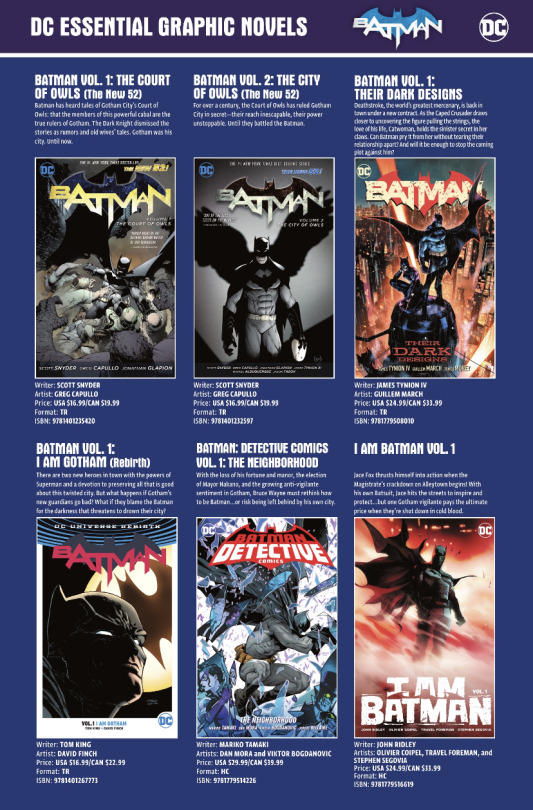

you could have ditched most of the content on these two pages, given superman and wonder woman an extra page each, and still had four pages worth of batman graphic novels!!! literally nothing on these pages short of maybe court of the owls has had any long term impact on gotham lore!!! these aren’t even the best batman books!!!
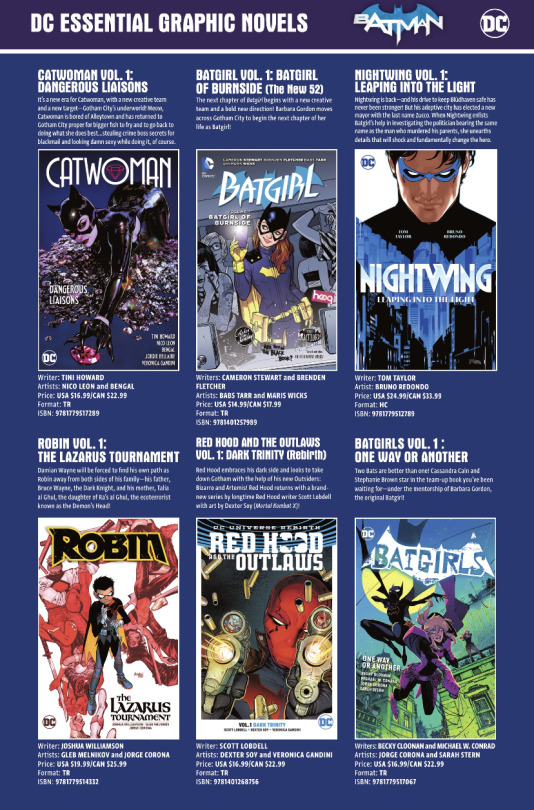
also not a single pick on this page is what i would pick as an intro to these characters but especially rhato. if you were going to recommend a single jason todd book, why would you pick rhato over under the hood???
i would have put batman & robin ‘09 for damian and birds of prey or batgirl: year one for babs, and… maybe shadow is the batgirl for cass, since the trades for her old solo are out of print. and probably gotham city sirens for catwoman.
it’s also criminal that they didn’t include batwoman: elegy.
#i don’t know enough about wonder woman to say what should and should not have been included on her list#but i’m pretty damn sure she deserves more than two pages#don’t mind me i’m just bitching
11 notes
·
View notes
Text
Birds of Prey (minus Harley Quinn)
[All images are owned by DC Comics and Warner Bros Discovery. Please don’t sue or paralyze me]
youtube
(Thanks to The World’s Finest)
It’s absolutely incredible that Bat-mania, that was always low-key A Thing since Batman's debut in the 1930s (but kicked into high gear in 1989 thanks to a little film starring Michael Keaton) is still going on (despite Joel Schumacher’s best efforts) It’s to the point that pretty much any DC film (and a number of TV shows) that doesn’t feature the Dark Knight is all but doomed.
This may have been the issue with 2002’s Birds of Prey, based on the comic of the same name. The show takes place in Gotham some years after Batman stopped being A Thing, but there is still Scum and Villainy in Gotham (or New Gotham) to deal with, so a new team was formed to deal with them.
The team is led by Barbara Gordon…
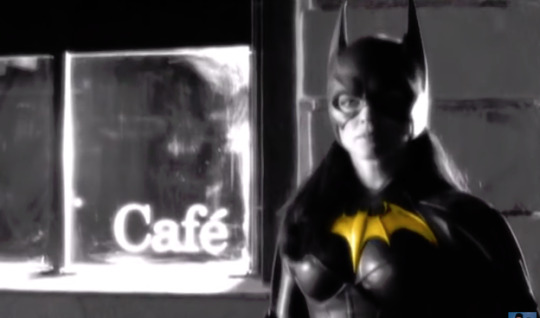
…AKA Batgirl…or at least she was until a scene ripped right from The Killing Joke graphic novel…
youtube
(Thanks to jbaltiero)
The Joker’s bullet shattered Barbera’s spine, leaving her a paraplegic. Still wanting to make a difference, she asked Bruce Wayne to set her us with a state-of-the-art computer system, which she used to hack into the city’s computer and surveillance network, allowing her to gain information on the underworld and rechristened herself…
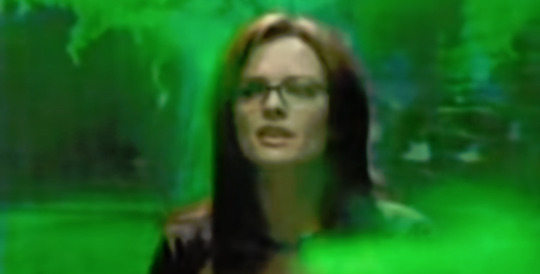
...Oracle
The second member is the team takes her origin from her pre-Crisis years rather than post-Crisis.

The Huntress AKA Helena Kyle, daughter of Batman and Catwoman. When the Joker murders Selina Kyle, Barbera takes in Helena and trains her to be her partner on the street.
Finally we come to the final member of the team…
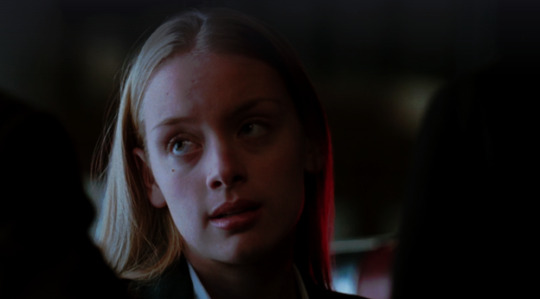
Dinah Lance is the daughter of the Black Canary. She has psychic abilities but little in the way of fighting abilities. As such, she’s usually held in reserve (or in danger)
The trio work to do what Batman did years ago, dealing with the Thug Of The Week.
However, as this was essentially a Batman series without Batman, plus for the most part there was no overarching storyline, the series only lasted half a season. Which is a shame, since the series had potential, even if the hardcore fans (like myself) may have had issues with the series taking too many liberties with DC canon.
However, the series was given a (sort of) proper sendoff 17 years later…
youtube
(Thanks to TV Promos)
If you would like to watch the series, it's available on Tubi or behind your favorite paywall.
If you would like to see an episode reviewed, let me know!
2 notes
·
View notes
Text
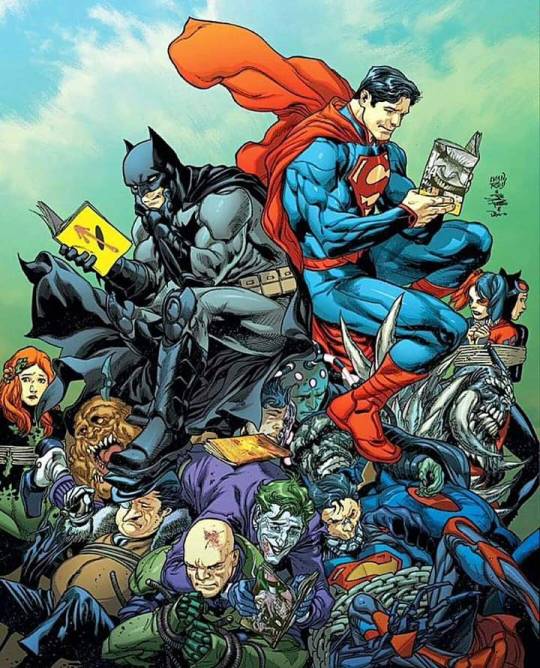
Happy #NationalBookLoversDay, Gothamites 🦇📚 What is your favorite Batman comic to re-read?
🖼️: Batman and Superman by Ivan Reis and Joe Prado, cover to DC Entertainment Essential Graphic Novels and Chronology 2016.
6 notes
·
View notes
Note
is supergirl (2011) one graphic novel? i know it sounds stupid but is vol 6 the only one that counts/is worth reading?
nope! it was an ongoing comic and it ran for abt 4 years. but if you're looking for something graphic novel-esque in format there are tpb (trade paperback) versions that collect the different arcs of 2011 if you'd be interested in those instead of individual issues.
also that's definitely not all that counts!! she has lots of good stuff imo. i also think if you choose to only focus on one character's Current continuity you're going to drive yourself crazy because there's so much good stuff out there over 80+ years of dc. don't limit yourself if you don't want to!!!
there's the much beloved sterling gates run of supergirl 2005 which is her first solo series since pre-crisis on infinite earths (event that essentially reset the dc universe in which kara was killed and wouldn't appear again for another 15 years). i would recommend reading it and the new krypton event (which takes a big chunk of that run) in its entirety since it has a lot of bearing on her and clark. if you're willing to look alllll the way back before crisis then i happen to like her 1972 (aka vol. 1) and 1982 (aka vol. 2) series. neither lasted very long and if you're willing to sit through some mildly silly stories then you get a great look at her adult characterization
1 note
·
View note
Text
The Top 10 Adult Fiction Publishers in the World
Publishers are essential in providing readers with varied and engaging adult fiction novels. Here is a selected list of the top ten adult fiction publishers who have significantly affected the literary scene.
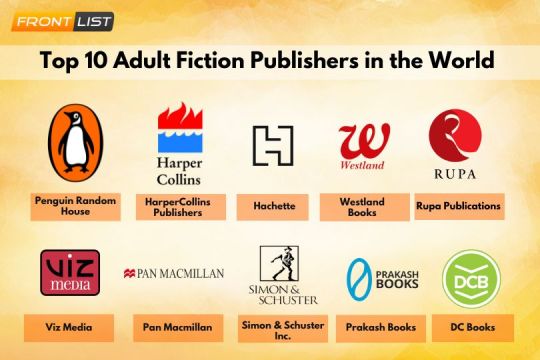
1. Penguin Random House
Penguin Random House provides a global platform for authors.
Penguin Random House is a literary behemoth dedicated to writers and their tales. Their devoted staff uses worldwide reach, new technology, and cooperation at every level of the publication process. They not only give a platform for authors but also strongly support intellectual property and freedom of speech, guaranteeing that views are heard worldwide.
2. HarperCollins Publishers
HarperCollins, headquartered in New York, has a two-century history and activities in 17 countries. With over 120 imprints worldwide, they publish roughly 10,000 new books annually in 16 languages, including print and digital media.
3. Hachette
Hachette, founded in 1846, has a long history of inspiring and enlightening people worldwide. With a devotion to quality literature, they remain a key participant in the publishing sector, appealing to the curious, ambitious, and those looking for great reading.
4. Prakash Books
Prakash Books, India's fastest-growing and largest publisher by volume, has impacted the business. With a revenue of $12 million, they publish 140 titles in Nielsen India's top 750, spanning categories such as fiction, nonfiction, self-help, classics, spirituality, and religion.
5. DC Books
DC Books, founded in 1974 by Dominic Chacko Kizhakemuri, is a prominent literary publishing business in India. It is the first ISO-certified book industry in the country.
6. Viz Media
VIZ Media is a global manga expert that pioneered the Japanese pop-culture phenomenon. With a strong presence in publishing, animation, cinema, and gaming, VIZ is America's top manga destination, reaching many millennial and GenZ manga fans.
7. Pan Macmillan
Pan Macmillan UK is one of the UK's leading general book publishers. They make substantial contributions to the literary environment through their varied imprints, which include Macmillan, Mantle, Pan, and others.
8. Simon & Schuster Inc.
Founded in 1924, Simon & Schuster has a rich history of groundbreaking ideas in publishing. From their first runaway bestseller, "The Crossword Puzzle Book," they have evolved into a modern publishing company.
9. Westland Books
Westland Books, an award-winning Indian publisher, publishes a variety of genres, including popular and literary fiction, business, politics, biography, spirituality, poetry, graphic novels, health, and self-help.
10. Rupa Publications
Established in 1936, Rupa Publications is a leading Indian trade publisher. With a diverse array of authors, including Chetan Bhagat, Ruskin Bond, Gulzar, and more, they continue to grow and contribute to the literary world.
Conclusion
The top ten adult fiction publishers offer a colourful tapestry of creative expression worldwide. From Arihant's scholarly concentration to DC Books' cultural diversity and HarperCollins' worldwide reach, each publisher makes a distinctive contribution to the literary environment. VIZ Media shines out in the manga craze. At the same time, Pan Macmillan and Simon & Schuster Inc. demonstrate endurance and adaptation in the ever-changing publishing industry. Westland Books and Rupa Publications contribute to India's unique literary history. These publishers work together to promote cultural interchange, information sharing, and the everlasting enchantment of narrative. Their reach extends beyond boundaries in an interconnected world, producing stories that capture and resonate with readers across continents.
Source By Nielsen BookScan Data
0 notes